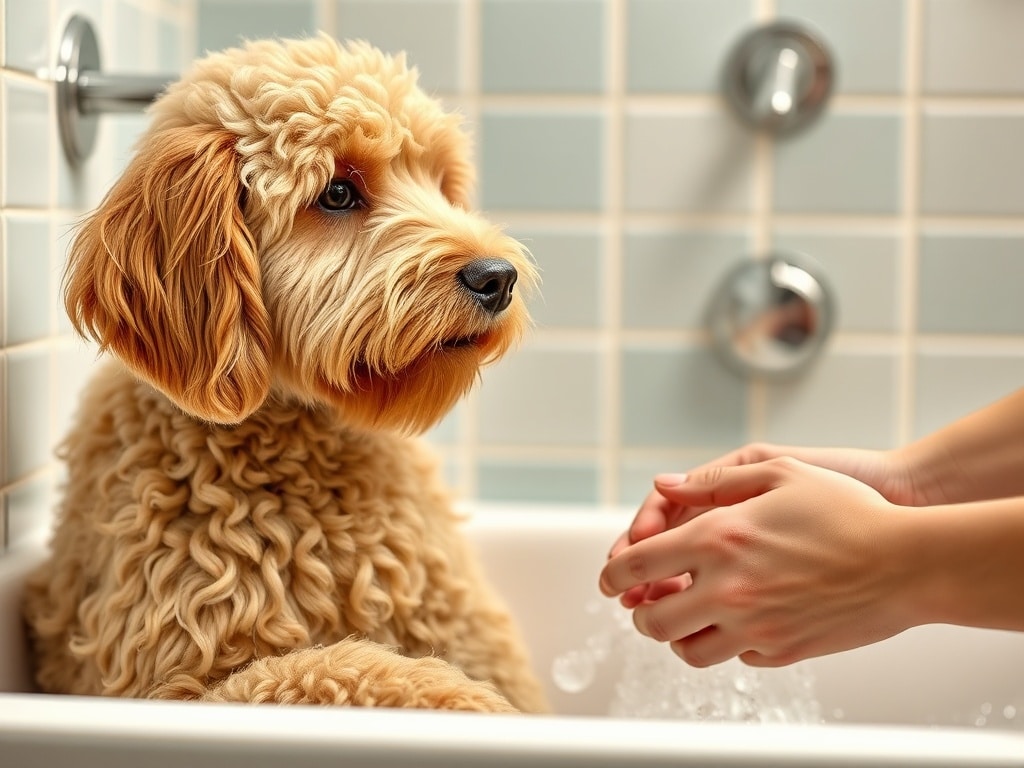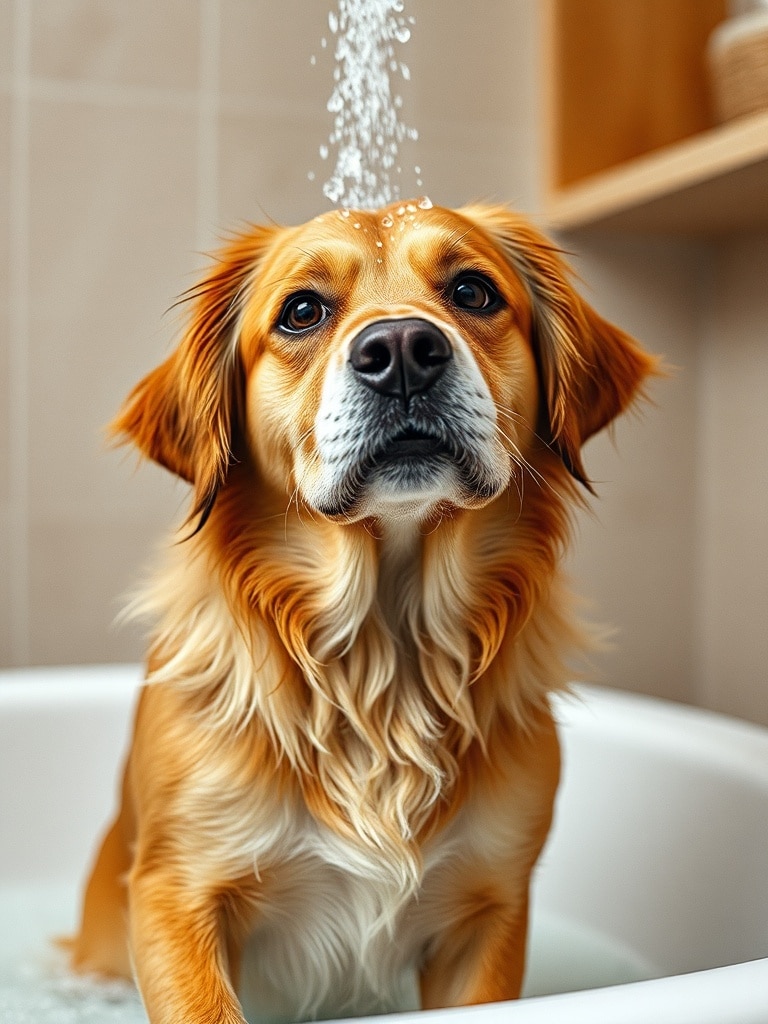The Ultimate Dog Bathing Guide: Frequency, Shampoos, and Secret Tips!
How Often Should You Bathe Your Dog?
Ah, the age-old question! How often should I bathe my dog? It's a query that plagues every dog owner at some point. The answer, unfortunately, isn't a simple one-size-fits-all. Unlike us humans, dogs don't need daily showers. In fact, over-bathing can strip their coat of essential oils, leading to dry skin and irritation. But letting them go too long between baths can result in unpleasant odors and a build-up of dirt and grime. So, where’s the sweet spot?
Generally speaking, most dogs benefit from a bath every 1 to 3 months. However, this is just a starting point. Several factors can influence how often your furry friend needs a scrub-down.
Factors Influencing Bathing Frequency
Think of your dog's bathing schedule as a personalized plan, not a rigid rule. Here's what to consider:
- Breed: As we'll explore later, certain breeds require more frequent bathing than others.
- Activity Level: A dog who spends hours digging in the garden or romping through muddy fields will naturally need more baths than a couch potato.
- Coat Type: Long-haired and thick-coated breeds tend to trap more dirt and debris, while short-haired breeds often stay cleaner for longer.
- Skin Conditions: Dogs with allergies, seborrhea, or other skin issues may require medicated baths more frequently, as directed by a veterinarian.
- Odor: Let's face it, some dogs are just smellier than others! If your dog starts to exude an offensive odor, it's probably time for a bath.
Breed-Specific Bathing Guidelines
Different breeds have different coat types and needs. Here's a general guideline for some popular breeds:
- Poodles and Doodles: These breeds have curly, non-shedding coats that require regular grooming and bathing (every 2-4 weeks) to prevent matting.
- Labradors and Golden Retrievers: Their double coats benefit from baths every 1-2 months to remove loose fur and maintain healthy skin.
- Short-Haired Breeds (e.g., Beagles, Boxers): These breeds typically only need baths every 2-3 months, or when visibly dirty.
- Terriers: Bathing frequency varies depending on the terrier breed, but generally, every 4-8 weeks is sufficient.
- Scent Hounds (e.g., Basset Hounds, Bloodhounds): These dogs can develop a strong odor, necessitating baths every 1-2 months.
Always consult with your veterinarian or a professional groomer for specific recommendations for your dog's breed.
Choosing the Right Dog Shampoo
Just like human shampoos, dog shampoos come in a wide variety of formulations. Choosing the right one is crucial for maintaining your dog's coat health and preventing skin irritation.
Important Note: Never use human shampoo on dogs! Human shampoo has a different pH balance than dog shampoo and can strip your dog's coat of its natural oils, leading to dryness and irritation.
Types of Dog Shampoos: Medicated, Hypoallergenic, and More
Here's a breakdown of some common types of dog shampoos:
- Medicated Shampoos: These shampoos contain ingredients to treat specific skin conditions like allergies, infections, or parasites. They should only be used under the guidance of a veterinarian.
- Hypoallergenic Shampoos: Formulated with gentle, non-irritating ingredients, these shampoos are ideal for dogs with sensitive skin or allergies.
- Oatmeal Shampoos: Oatmeal is a natural moisturizer and soother, making these shampoos great for relieving dry, itchy skin.
- Flea and Tick Shampoos: These shampoos contain insecticides to kill fleas and ticks. Use with caution and follow the instructions carefully.
- Deodorizing Shampoos: Designed to eliminate unpleasant odors, these shampoos often contain fragrance or odor-neutralizing ingredients.
- Whitening Shampoos: These shampoos contain optical brighteners to enhance the whiteness of white or light-colored coats.
- 2-in-1 Shampoos and Conditioners: These products combine shampoo and conditioner in one step, saving time and effort.
Step-by-Step Dog Bathing Guide
Ready to give your dog a spa day? Here's a step-by-step guide to help you through the process:
Preparing for the Bath: Supplies and Location
Before you even think about turning on the water, gather your supplies:
- Dog Shampoo: Choose the right shampoo for your dog's coat and skin type.
- Towels: Have plenty of absorbent towels on hand.
- Brush: Use a brush appropriate for your dog's coat type.
- Non-Slip Mat: Place a non-slip mat in the tub or shower to prevent your dog from slipping.
- Water: Make sure the water is lukewarm, not too hot or too cold.
- Optional: Cotton balls (for ears), treats, and a distraction (like a lick mat covered in peanut butter).
Choose a location that’s easy to clean and where your dog feels relatively comfortable. This could be a bathtub, shower, utility sink, or even outdoors with a hose (weather permitting).
Bathing Techniques for Different Dog Sizes
- Small Dogs: A sink or small tub works well for smaller breeds. Be gentle and use a cup or small pitcher to wet and rinse them.
- Medium-Sized Dogs: A bathtub or shower is usually the best option for medium-sized dogs.
- Large Dogs: For large breeds, a walk-in shower or outdoor space with a hose may be necessary. Consider using a specialized dog washing station.
Drying Your Dog: Towel, Blow Dryer, and Natural Drying
Drying your dog is just as important as the bathing itself. Here are a few options:
- Towel Drying: Use absorbent towels to thoroughly dry your dog's coat. This is the gentlest option and works well for short-haired breeds.
- Blow Drying: If your dog tolerates it, a cool or warm (never hot!) blow dryer can speed up the drying process. Keep the dryer moving and avoid focusing on one spot for too long.
- Natural Drying: On a warm day, you can let your dog air dry outdoors. Make sure they have a comfortable place to lie down and are protected from the sun.
Be sure to brush your dog's coat while drying to prevent matting.
Dealing with Dogs Who Hate Baths
Not all dogs enjoy bath time. If your dog dreads baths, here are some tips to make the experience less stressful:
- Start Young: Introduce your puppy to baths early on, making it a positive experience with treats and praise.
- Stay Calm: Your dog can sense your anxiety. Remain calm and reassuring throughout the bath.
- Use Positive Reinforcement: Reward your dog with treats and praise during and after the bath.
- Make it Fun: Turn bath time into a game with toys or a lick mat covered in peanut butter.
- Consider a Professional Groomer: If your dog is extremely resistant to baths, consider taking them to a professional groomer who has experience handling difficult dogs.
Alternatives to Bathing: Wipes and Dry Shampoos
For quick clean-ups between baths, consider using dog wipes or dry shampoo. These products can help remove dirt and odor without the need for water.
- Dog Wipes: Ideal for cleaning paws, faces, and other small areas.
- Dry Shampoos: These powders or sprays absorb excess oil and dirt, leaving your dog's coat feeling clean and refreshed.
Maintaining a Healthy Coat Between Baths
Regular grooming is essential for maintaining a healthy coat between baths. Brush your dog regularly to remove loose fur, prevent matting, and distribute natural oils.
Consider also using a dog shower sprayer attachment; one great option is available here: Dog Shower Sprayer Attachment
Expert Tips and Tricks for a Successful Dog Bathing Experience
- Brush Before Bathing: Brushing your dog before the bath helps remove loose fur and mats, making the bathing process more effective.
- Protect Their Ears: Place cotton balls in your dog's ears to prevent water from entering.
- Avoid Getting Soap in Their Eyes: Use a gentle stream of water to rinse their head and face, being careful to avoid getting soap in their eyes.
- Rinse Thoroughly: Make sure to rinse all the shampoo out of your dog's coat to prevent skin irritation.
- Make it a Positive Experience: By creating a calm, positive, and rewarding bath time routine, you can help your dog learn to tolerate and even enjoy bath time.
With a little patience and the right techniques, you can make bath time a pleasant experience for both you and your furry friend!


